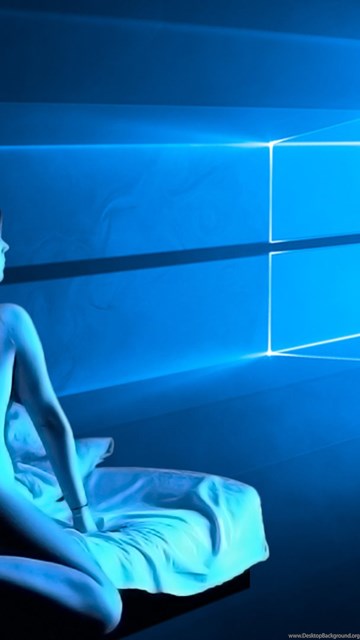Access Android From Pc
© Graphic: Elena Scotti (Photos: Shutterstock, AP)
You’ll be prompted to install the Your Phone app on your Android. Open it, sign in with your Microsoft account (or use the handy QR code on your Windows PC to link the two) and accept all the.
- You also need to turn on the Location Access feature on your device. How To Use Android Device Manager App. Step 1: Switch the Android Device Manager On or Off. From your device’s Apps menu, open the Google Settings app (this is a different app than Settings) Allow Android Device Manager, source: pcadvisor.uk.
- Access your Android messages on PC Upon launch, the Pushbullet main window will appear. Select ‘Devices' on the left-hand side of the pane to confirm your Android device has been detected.
- It's simple to share Android files to Windows PC. Install ES File Explorer in Android device. Go to Tools and select Remote Manager then you can see turn on. And you will get an address like ftp://192.168.1.24:3721/ enter it on your PC file explorer and you can access to your Android phone from PC.
- Step 4: Once the connection is successfully made you can see your Android in PC. In the upper menu bar, you can click 'Remote Control' button to access your Android from PC. So, the actual procedure of how to remotely access Android phone from PC is very simple, you just need to tweak the settings properly.
Why bother with cables when you don’t have to? It’s 2020. There’s no reason we shouldn’t be able to wirelessly connect to all of our devices, whether you’re looking to transfer files, stream media, or even adjust one device’s settings using another.
Were it only so easy, though. This week’s question for Lifehacker’s Tech 911 advice column gets right to the core of the geeky experience. No messing around today. As Mohd writes:
Remote Access Android From Pc
“How could I connect my android with PC without any cables?”
Why is it so hard to get Android and Windows to play together?
Believe me, nothing is more annoying than having to physically connect my Android to my PC whenever I want to access something on it—or, really, whenever I want to muck around with adb commands and betas I probably shouldn’t be installing.
In a perfect world, there would be a tiny little option in Android that would allow you to create a direct, wireless connection to a laptop or desktop. You could then control your phone remotely, much as one might use a remote desktop app to move the mouse and type commands on a faraway PC, and transfer files between your PC and phone without needing any cables at all.
We don’t quite have that kind of setup by default, but we can sort-of get there with a little help.
One option for connecting your Android to your PC is to use Windows’ built-in settings for linking one to the other. In the most recent version of Windows 10, just pull up Settings > Your Phone, and click on Add a phone to get started. You’ll be prompted to install the Your Phone app on your Android. Open it, sign in with your Microsoft account (or use the handy QR code on your Windows PC to link the two) and accept all the permissions. Once you’ve linked the two, you’ll be able to access your phone’s notifications, messages, and photos directly from your Windows PC. You’ll also be able to make and receive calls through your phone on your Windows PC.
Android File Transfer Windows 10
You should also be able to use your phone and PC’s “Nearby Share” features to exchange files between the two via Bluetooth. (Setting it up is as easy as pulling up your Settings app on each device, searching for “Nearby Share,” and enabling it.) You’d then use Android’s built-in sharing features or Windows’ Send to > Bluetooth device menu in File Explorer to ship data back and forth.
Honestly, though, I find “Nearby Share” to be confusing at best, and mostly kludgy. Other apps like Wifi File Transfer or SuperBeam make it much easier to send and receive files between your Android and PC. There’s also websites like Snapdrop, which require no extra apps for file transfers, or the tried-and-true apps AirDroid and Portal.
If you’re using a Samsung Android, I definitely recommend checking out the company’s Dex app, which basically gives you a pop-up version of your Android directly on your desktop. It requires a cable, which doesn’t quite address your wireless needs, but it’s such a great way to access your Android from a PC that I have to mention it.
Dell Mobile Connect is another option worth trying. You will, unfortunately, need a Dell PC in order to install it...unless you get creative. And by that, I mean pull up the Windows Store link for the app on your phone, log into your Microsoft account, and select to install the app on your Windows 10 PC. (Trying to do this from a Windows 10 PC won’t work if you don’t have a Dell.)

I got everything installed, but only ran into trouble when getting the my Ethernet-based PC and wireless Android to see one another. I suspect this will work better for you if you’re trying to connect a wireless laptop to your Android. That, or perhaps Dell really does have some creative ways to block non-Dell users from trying the app. (I’ve read comments from plenty of non-Dell people who got this app to work, so this might just be an issue on my end.)
If you’re lucky, everything will connect just fine, and you’ll be able to access your messages, phone app, files, and share your Android’s screen directly on your Windows 10 PC. If you’re running into any issues however, abandon ship and try some other alternatives for remotely viewing your Android, such as the classic AirMirror or Scrcpy.
I think that about covers it? Sorry for the hodgepodge of solutions, but that’s Android for you. Unless you have a Samsung phone—which, again, makes this process absurdly easy (albeit wired) with the Dex app—you’re going to have to rely on a few different solutions depending on what you’re trying to do wirelessly between your Android and PC.
If I’ve missed anything, Lifehacker readers, let me know in the comments!
Do you have a tech question keeping you up at night? Tired of troubleshooting your Windows or Mac? Looking for advice on apps, browser extensions, or utilities to accomplish a particular task? Let us know! Tell us in the comments below or email david.murphy@lifehacker.com.
Last Updated : Wide Angle Software
Introduction
As well as connecting your Android device to Droid Transfer over your local WiFi network, you can also connect your Android device to your computer using a USB cable.
To do this - you need to change some of the settings on your Android device so that Droid Transfer and Transfer Companion (running on your Android device) can communicate. This support article shows you how...
Enabling Developer Options on your Android Device.
You need to change some settings on your Android device so that 'Developer Mode' is enabled.
- Open your device settings and choose 'About phone', 'About device' or just 'About'.
- Look for the entry 'Build Number', or 'Build Version'. This entry may be under a further sub-menu called 'Software Information' or 'Software Info' on some devices.
- Tap the 'Build Number' entry five or six times. (No, really!)
Your device will show you how many taps are required to enable Developer Mode. When done your device will have Developer Mode enabled. - Go back to your main Settings menu - scroll down to the bottom, you should see a new entry called 'Developer Options'.
Congratulations! You're now a developer! ;)
Enable USB Debugging.
Just a couple more settings to change...

- Tap to open 'Developer Options'
- Make sure 'Developer Options' is set to ON.
- Scroll down to 'USB Debugging' and make sure that is enabled also. If it isn't, slide the toggle switch to the right to enable it.
- Depending on your Android device - a window may pop up on your phone asking you to verify that you want to enable USB Debugging. Click OK or Apply to allow USB Debugging to become enabled.
Download Transfer Companion to your Android Device.
Download Transfer Companion to your Android device from the Google Play Store. You need to be running at least version 1.58 of Transfer Companion - so check for updates if you have previously downloaded Transfer Companion to your Android device.
Can't Access Android From Pc
Download Droid Transfer to your PC.
On your Windows PC, go to this address to download Droid Transfer...
Run Droid Transfer on your PC
Run Droid Transfer on your PC and when you see the connect screen:
Connect your Android device to your PC with a USB cable. Depending on your device, your phone may request permission for it to communicate with your PC.
Click OK or Allow on any prompts showing on your Android Device.
When Droid Transfer detects your device, it will launch Transfer Companion on your Android device and begin to load your phones data through the USB cable.
Connection should now made between Droid Transfer and Transfer Companion and you can start managing and copying your Android Phone content using Droid Transfer on your PC.
If you're having troubles, check out our USB connection troubleshooting tips which will help you resolve any issues.